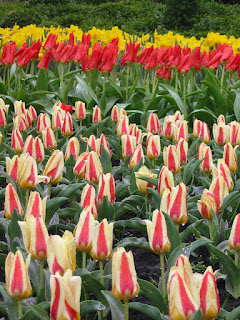
People often talk about the three pillars of sustainability - social, economic, and environment. I must admit that this image never really resonated in my mind as one that adequately described the dimensions of sustainability.
An alternative image has conjoured itself up in my mind, follow me if you can:
Imagine instead one large box - lets call this the environment. Within that box image a second, smaller box contained completely within the first - lets call this the social dimension. Within this second box a third exisits - lets label it economic. Finally a fourth box is drawn contained entirely within the third - it is the smallest box but it is at the heart of our diagram - it is labeled financial.
I think this image more accurately portrays the interconnected nature of the dimensions of sustainability. The financial system lies at the heart of of the way the world works today - but it exists in the context of a greater economic system. This economy is the invention of humans, and operates in the context of our cultures and societies - hence the social sphere. Finally, all of this operates within the finite physical boundaries of the planet Earth.
The world celebrated Earth day on Sunday and it was a great excuse to get outside and appreciate the world around us. I headed out of Amsterdam city to the Dutch countryside on my bicycle headed towards the famous tulip fields. They really are a sight to behold if you havent had the chance to see them in person. Acres upon acres of vibrant colours in full bloom, as far as the eye can see (enjoy the photo!). It occured to me that the tulip fields were a great illustration of the interconnectivity of sustainability dimensions. The basic function of the tulip fields is to supply a multi-million dollar trade in tulip bulbs and cut flowers, but this creates a wider economy around it of related products and services, and empowers the Dutch people to participate in the world economy. I still havent determined whether or not the tulip trade has shaped the Dutch culture or if the Dutch culture has shaped the tulip trade, but either way they are a very important part of the country's identity and culture. Finally, they need a healthy environment to grow and flourish, and contribute to the Earth's biodiversity.

1 comment:
I very much agree with your image of the bigger box - environment - containing all the others. But then why are we still putting environment at the last place, why is GRI reports doing this?
Wouldn't be more realistic and transparent to admit problems at their correct order and work responsibly towards solving these problems. I find that this approach would be more sincere with the stakeholders.
Post a Comment